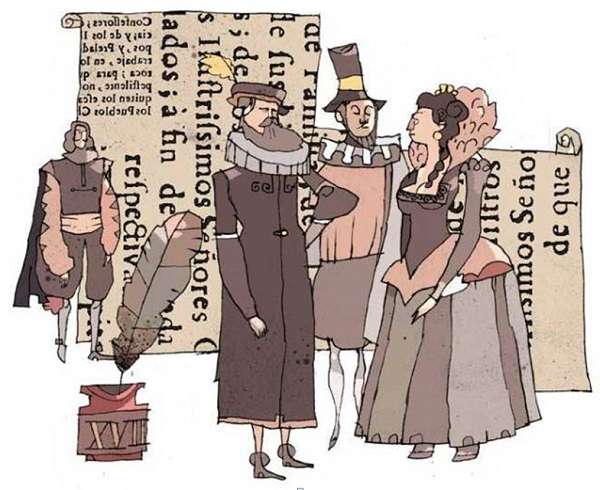During the Inquisition, or Colonial Era of San Miguel de Allende, it was best to be a Spaniard born in Spain. Hence you were at the top of the caste system with the most opportunities. Second in line were the offspring of Peninsulares (those born in the Iberian Peninsula) born here in town, called Creoles. From there the opportunities in life largely depended on your skin tone as from 14 to 20 more races were created as Africans, indigenous, and such intermarried and reproduced.

On the surface, being a Creole, or in second place, doesn’t sound so bad. Plus, really, who would want their pregnant mother to cross the ocean and back just so you could be born in Spain? Nothing compliments morning sickness like sea sickness!
However, most San Miguel de Allende Creoles were keenly aware of their limitations, which like an unattended pot, caused a boil leading to the War of Independence from Spain. But what, exactly, did all the Creoles have in common?

San Miguel de Allende was a mixed society. The individuals that made up this mass of mixed people were so absorbed in surviving and making a place for themselves in a polarized world between whites and indigenous, that they hardly had the strength to assert their own identity. Of all the groups that participated in the creation of San Miguel de Allende in the seventeenth century, only the Creoles created the conditions to feel and act as a group with common identities, ways of life and aspirations.

The town’s first Creoles, both socially and economically, rested on the prestige of being descendants of conquistadors.
Being Creole only entered into crisis mode when the crown installed a bureaucracy of Spanish officials that excluded the Creoles from managerial positions. At the end of the 16th century, San Miguel’s Creoles resented the continuous deterioration of their social position against the Spaniards who came here, stayed a few years and returned to Spain enriched.
Plus there was the Creole identity problem. Creoles were Americans by birth and from the second or third generation they rarely had any intention of going to Spain.

The most notable difference between Spanish and the English, Dutch or French colonizers in the New World is the surprising speed with which the Spanish colonists became Americanized. Spaniards not only aimed to control the silver, but to transform the very life of the indigenous through intermarriage and conversion.
Conquistadors were encouraged to marry native women and reproduce. So these mixed raced babies were Spanish, but strongly influenced by indigenous food, customs and ways of life.
Language and religion became the main vehicles for the westernization of the American world. For the first time the inhabitants of the Mexico communicated through the same language.
If Spanish operated as a bridge that allowed communication between diverse ethnic groups, religion was the cement that unified that social diversity around shared beliefs, values and behaviors. In less than a century the practices and principles of the Catholic religion unified all races in a single religion by mixing Catholicism into indigenous beliefs.

Games, parties, agricultural activities, work, political events and natural events became entwined with religious symbols that continue to the present day. San Miguel de Allende became headquarters of religious orders and universities whose philosophies were based on Catholicism. Since these institutions were the only ones authorized to educate the population Catholicism monopolized the arts including books, music, paintings, theater, poetry, and architecture.

Plus Creoles had a Creole version of the Virgin Mary, Guadalupe, rich in symbolism creating a new country, Mexico, and race (indigenous mixed with European) that proved even God’s mother was a Creole.

The creation of popular religious symbols such as the Virgin of Guadalupe, the creation of a grandiose and baroque architecture, plus Spanish being the universal language created a Creole consciousness that fused indigenous and Spanish values into something unique and wholly Mexican.

That’s part of why native son, Ignacio Allende, himself a Creole, wanted Mexico free from Spain and his future free from not being born there.
by Joseph Toone
- TripAdvisor’s top tour guide with History and Culture Walking Tours and Joseph Toone Tours.
- Amazon’s best selling author of the San Miguel de Allende Secrets books.
- Author of the Maria Dolls coloring book helping indigenous doll makers.
- Creator of San Miguel de Allende Secrets YouTube channel with over 100 videos and 1,500 views monthly.

